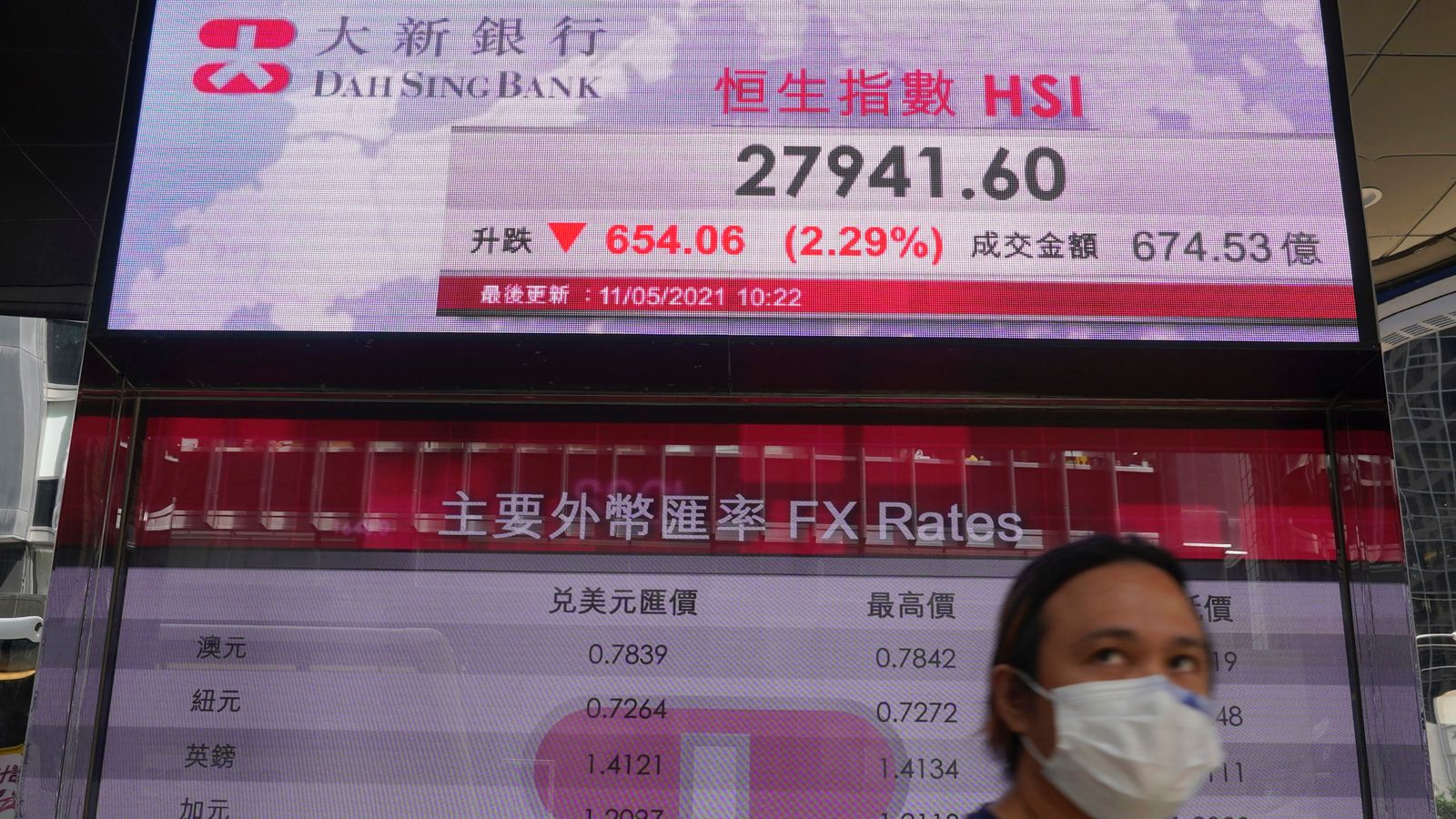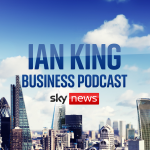Stock markets are tumbling around the world.
After last night’s sell-off on Wall Street, during which the Nasdaq suffered a 2.5% drop and the Dow Jones Industrial Average gave up a 300 point gain after rising above 35,000 for the first time, the sell-off continued overnight into the Asia Pacific region.
The Nikkei 225 in Tokyo fell by 3% and the Hang Seng in Hong Kong by 2% while the main index in Taiwan fell by almost 4%. The main stock indices in South Korea and Australia each fell by more than 1%.
Europe picked up the baton this morning with all of the main indices falling by between 1-2%. In London, the FTSE-100 – which on Friday had closed above 7,100 for the first time since 25 February last year – came rattling back below 7,000, declining by more than 2%. For most of the morning, not a single member of the blue-chip index was in positive territory.
So what’s behind the fall?
In a word, inflation.
For the last couple of months, a big debate has been raging among policymakers, economists and investors over whether they need to worry about a sustained increase in inflation. Central bankers such as Jay Powell, the chairman of the Federal Reserve and Andrew Bailey, governor of the Bank of England, have made clear they think the expected spike in inflation this year will merely be ‘transitory’, in other words, a technical bounce in the value of some commodities after their prices fell a year ago as the world went into lockdown.
For example, in late April last year, the price of some crude oil contracts went negative brieflyas demand collapsed while stockpiles remained high. The price of Brent Crude is up by 74% since the beginning of November last year and so, as the lows of last year are ‘lapped’, an automatic uptick in inflation will follow.
The big question is whether there is more to the recent price increases than just an automatic recovery driven by businesses rebuilding inventories as they and their customers emerge from lockdown.
Those price increases have been pretty striking. The price of copper – the metal known as ‘Dr Copper’ because it is such a good barometer of economic activity – hit an all-time high of $10,747.50 per tonne on Monday while the price of iron ore, a key ingredient in steel manufacturing, also hit an all-time high.
Other metals prices have also been exuberant of late. The price of aluminium last month hit a 10-year high while the price of nickel, another metal with many industrial applications, has this year been hitting levels not seen since 2014. And tin, whose use in solder makes it a key component in the manufacture of circuit boards, is at its highest level for a decade.
Nor have the price increases been confined to metals or crude oil. The prices of some agricultural commodities have also risen sharply, with the price of wheat up by almost 30% since the beginning of the year while the price of corn, a key component in animal feed, last month hit its highest level since August 2013. Soybean prices, another key agricultural commodity, have also been robust. Meanwhile the price of lumber, a key input cost for the building industry, is at a record level. It costs four times what it did this time last year.
There are also signs of a pick-up in inflation elsewhere. The cost of shipping, a key expense for businesses often passed on to consumers, has risen sharply this year – partly a reflection of the fact that, as trade began to revive late last year, a lot of ships and containers were not where they should have been. That led to shortages and, as a result, higher prices.
Global container prices have more than doubled since December while the cost of shipping goods from China to Europe, partly due to the stranding of the container ship Ever Given in the Suez Canal in March, has quadrupled since November.
Businesses are looking, where possible, to pass on those higher costs. An influential survey published on Tuesday suggested that more small businesses in the US are planning to raise their prices this year than at any point since 1980.
And, as consumers grapple with higher prices, that will build up pressure for pay rises.
Earnings growth in the UK has been running at north of 4% for the last few months – although this partly reflects the fact that a lot of lower paid workers remain on furlough – while, in the United States, the latest payrolls data published on Friday last week pointed to a mounting skills shortage. That is forcing employers to offer both pay increases and signing-on bonuses in some cases. The financial publication Barron’s reported at the weekend that one district in Maryland is so desperate to hire school bus drivers that it has been offering signing-on bonuses of $1,500 a time.
These pressures are now showing up in inflation figures around the world. The sell-off in Asia on Tuesday was in part sparked by news that prices of goods leaving the factory gate in China in April were up 6.8% on the same month last year – representing the fastest rate of growth three and a half years.
All of this has concerned investors that the pick-up in inflation is more than just a technical correction but something more deep-seated.
That, in turn, has raised concerns that central banks, which for the last decade have kept interest rates at negative, zero or near-zero levels and which in many cases been flooding the world with liquidity through asset purchase schemes (Quantitative Easing in the jargon), may soon have to tighten monetary policy. Tech stocks, whose high valuations typically reflect expectations of strong earnings many years into the future, are particularly vulnerable to upward revisions of interest rate expectations.
What has particularly unnerved some investors is that the Fed shows no sign of wanting to tighten monetary policy in the face of this – in spite of the fact that the Biden administration is stoking inflation with three stimulus packages that together will pump a further $4.1trillion into the US economy.
Stan Druckenmiller, one of America’s most influential investors, summed up the concerns of many in an article for the Wall Street Journal, published today, carrying the headline ‘The Fed is playing with fire’.
He wrote: “The American economy is back to pre-recession levels of gross domestic product and the unemployment rate has recovered 70% of the initial pandemic hit in only six months, four times as fast as in a typical recession.
“Normally at this stage of a recovery, the Fed would be planning its first rate hike. This time the Fed is telling markets that the first hike will happen in 32 months, two and a half years later than normal.
“In addition, the Fed continues to buy $40bn a month in mortgages, even as housing is clearly running out of supply. And the central bank still isn’t even thinking about ending $120 billion a month of bond purchases.”
The fact that stocks everywhere have enjoyed more or less uninterrupted growth for the last 12 months, partly due to cheap money almost everywhere, has also created conditions ripe for some sort of correction.
At its closing price last night, the S&P 500, America’s leading stock index was up 43% on this day last year. The Nikkei was up 40% in the same period and the DAX 30 in Germany up 42%. Even the FTSE-100, a perennial laggard among major stock indices, was up 20% during the period.
Take away cheap money and QE, two of the major drivers of equity and bond markets during the last decade, and prospects suddenly look less attractive even with the supportive backdrop of a post-pandemic recovery. Investors with memories of the 1970s such as Terry Smith, one of the UK’s most widely-followed fund managers, will also be acutely aware that, once the inflation genie is out of the bottle, it can be a long and painful process putting it back.
Add to that the traditional seasonality of the market – the old adage ‘sell in May and go away’ does have a factual basis – and it is unsurprising to see markets pausing for breath.






















